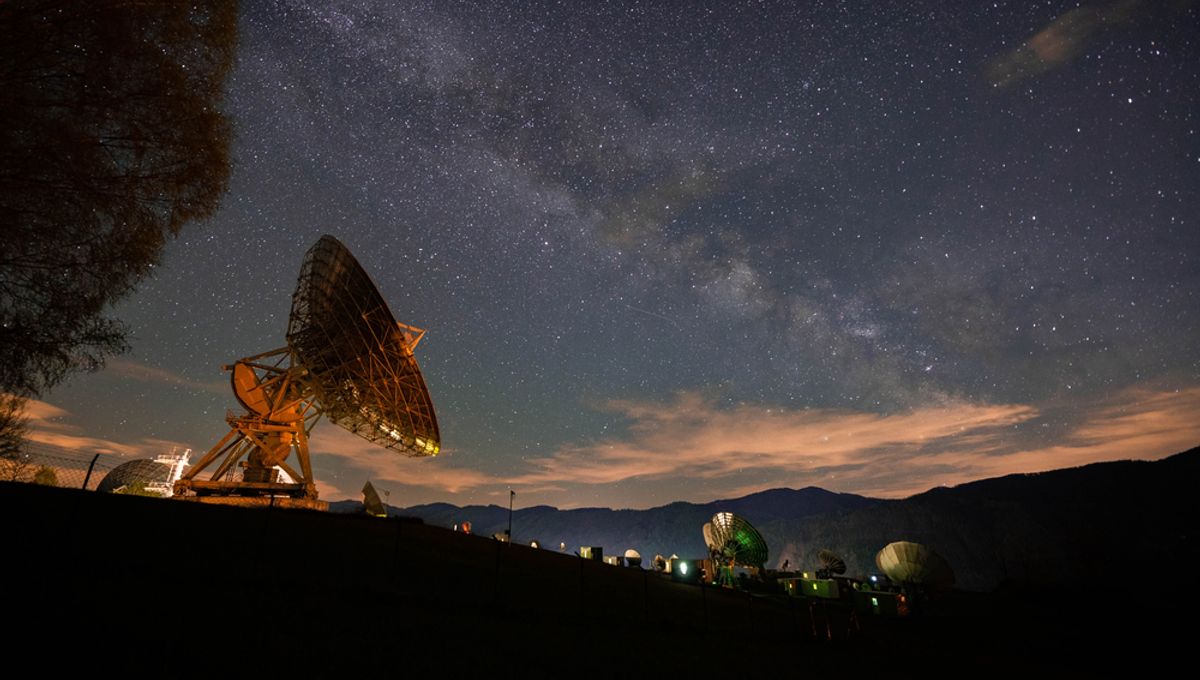
A new hub at the University of St Andrews is working to coordinate global expertise to better prepare humanity for a potential alien contact. The work of the group will build upon the current protocols but go beyond them, making them as realistic as possible and ready to be deployed in the event of receiving a message from an extraterrestrial civilization.
Contact protocols were drawn up by the Search for Extraterrestrial Intelligence (SETI) community in 1989, and they were last revised in 2010. They detail how scientists should go about confirming a possible signal, but the post-detection part is very limited. And recent research, as well as real-life experience with a false signal, suggests that information about a detection might spread before astronomers have time to unequivocally confirm it. Also, these protocols are not enforceable, which is another issue.
“Science fiction is awash with explorations of the impact on human society following discovery of, and even encounters with, life or intelligence elsewhere,” Dr John Elliott, the coordinator for the hub said in a statement. “But we need to go beyond thinking about the impact on humanity. We need to coordinate our expert knowledge not only for assessing the evidence but also for considering the human social response, as our understanding progresses and what we know and what we don’t know is communicated. And the time to do this is now.”
The University of St Andrew’s SETI Post-Detection Hub is tasked to work on the policy gap of the current protocols, as well as considering how science communication related to the search for (and possible discovery of) alien life ought to be done responsibly. Application of the research to establish such protocols might even go beyond SETI itself.
“Scanning signals of assumed extraterrestrial origin for structures of language and attaching meaning is an elaborate and time-consuming process during which our knowledge will be advanced in many steps as we learn ‘Extra-Terrestrial’,” Elliot suggested.
Last month, a paper on the subject of the geopolitical implications of such a detection called for transparency and openness about the SETI program. This is something that seems to be in-built in the protocol, but could certainly benefit from a best-practice approach.
“What actually happens when you get a SETI detection is that the media immediately start calling you up. There is no secrecy in this work. Usually, within a few hours, everyone would know,” Dr Seth Shostak, senior astronomer at the SETI Institute, previously told IFLScience referring to a famous incident in 1997.
A recent documentary (available in the UK and from January in the US) tried to imagine how humanity might react to the fateful first contact. Education of scientists, the public, and politicians on how best this can be done is likely to be very important.
“Will we ever get a message from E.T.? We don’t know,” explained Elliot. “We also don’t know when this is going to happen. But we do know that we cannot afford to be ill prepared – scientifically, socially, and politically rudderless – for an event that could turn into reality as early as tomorrow and which we cannot afford to mismanage.”
Source Link: Scientists Are Planning New Protocols In Case Of Alien Contact